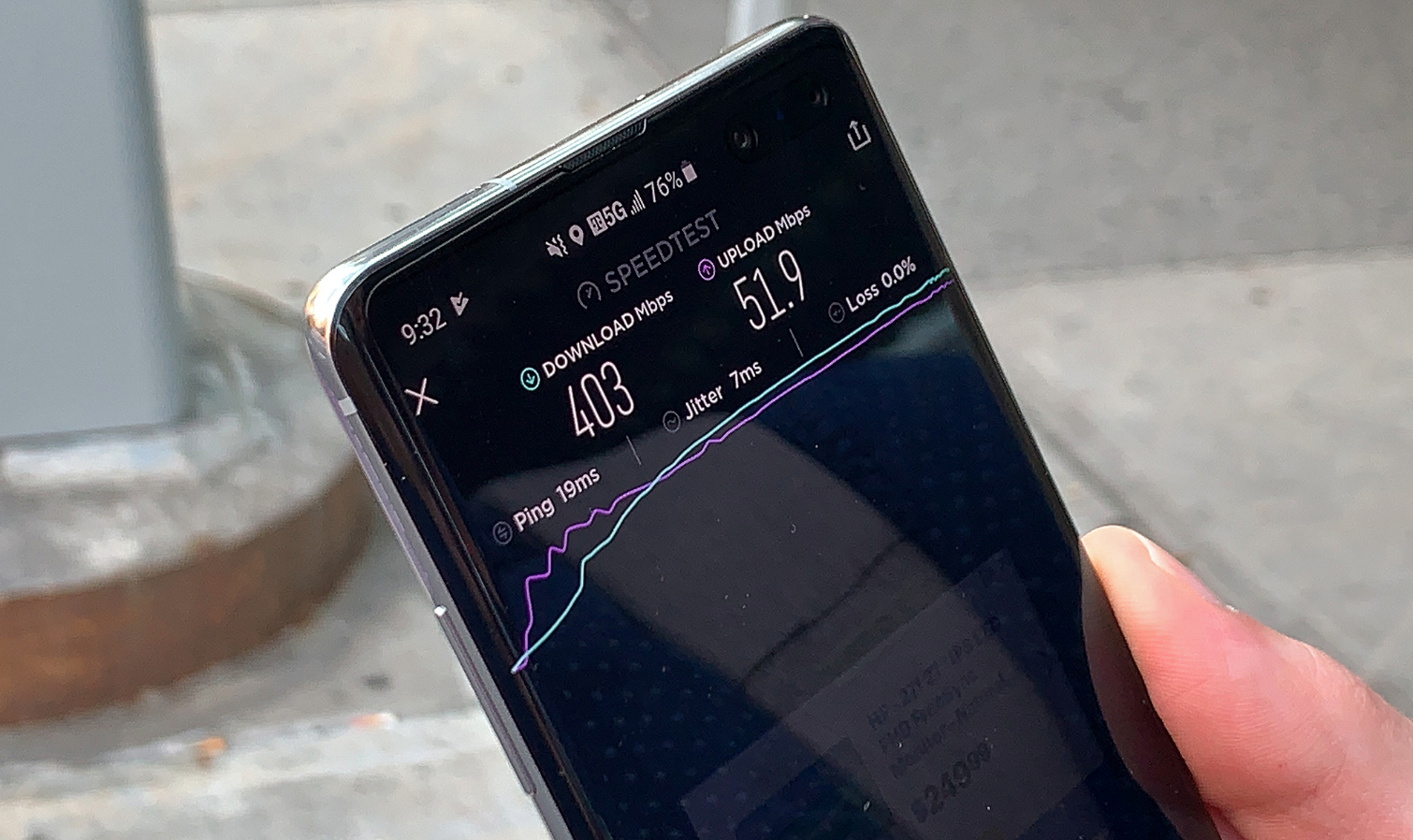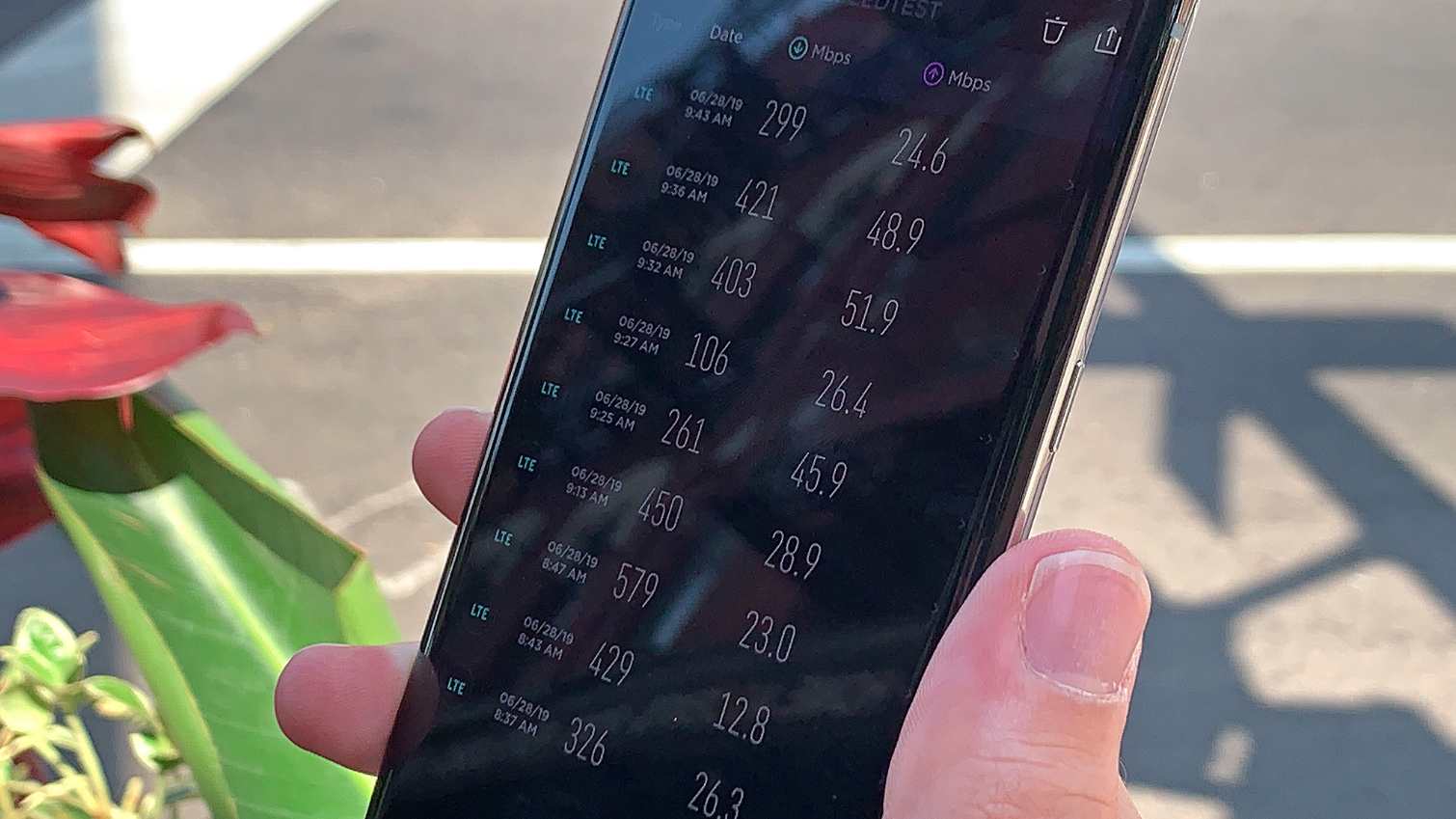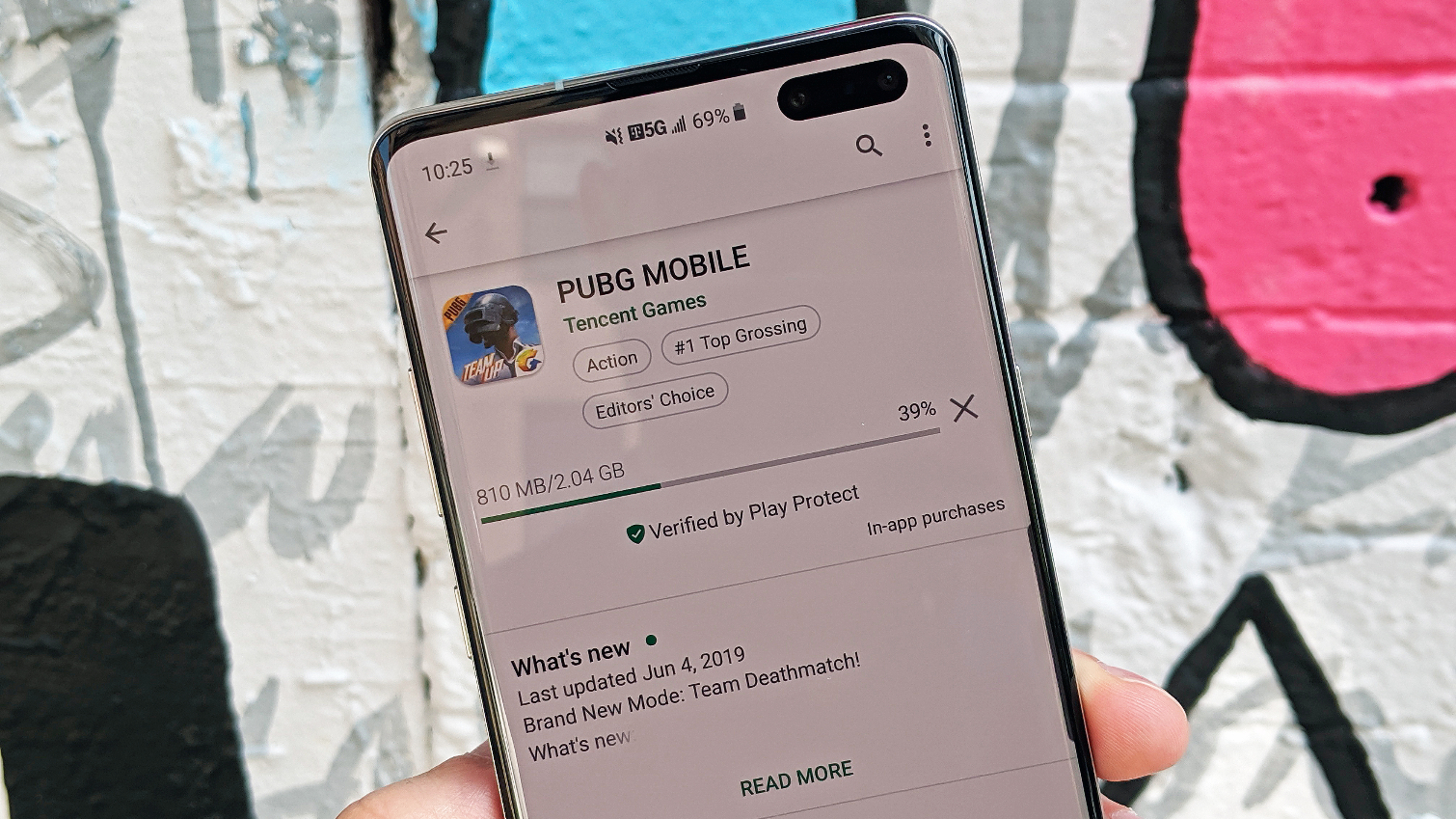First T-Mobile 5G Speed Tests: The Results Are In
T-Mobile's 5G network delivers close to 600 Mbps speeds in New York City and broader coverage than Verizon does in Chicago, but it's not as speedy.
T-Mobile is the first U.S. carrier to bring 5G to the Big Apple. And we just ran our first speed tests using the Galaxy S10 5G, a 6.7-inch beast of a smartphone with a big price to match ($1,300).

Based on our early test results, I'd say that T-Mobile's 5G network is delivering solid but unspectacular speeds in NYC, but the coverage is impressively broad compared to Verizon's network in Chicago.
To T-Mobile’s credit, the carrier isn’t overhyping this launch, calling the initial phase “a small step toward 5G for All.” Here are the results so far.
T-Mobile 5G Key Takeaways
- We saw a top download speed of 579 Mbps in downtown New York City and averaged 369.9 Mbps. That's 10 times faster than the average speed we saw during our nationwide 4G testing on T-Mobile's network (36.3 Mbps)
- Verizon's 5G network delivered a 672 Mbps average on its 5G network in Chicago and a peak speed of 1.07 Gbps, which is a lot faster. But T-Mobile has only 100MHz of spectrum deployed in NYC versus 400MHz in Cleveland, and T-Mobile's speeds will get better over time.
- It took 1 minute and 50 seconds to download PUBG Mobile over T-Mobile's 5G network, which is pretty good for a 2 GB file. It took 2 minutes and 17 seconds on Verizon's network.
- We downloaded the entire season of Sabrina on Netflix (11 episodes) in 3 minutes and 52 seconds.
- Upload speeds are still on 4G LTE at this stage, so they're under 50 Mbps.
T-Mobile 5G speed test results: Pretty impressive
T-Mobile and Samsung handed us a Galaxy S10 5G and we tested in a few locations, and we started at the corner of E 7th Street and Avenue C near Tompkins Square Park. We fired up Ookla's Speedtest app and saw very good download speeds ranging from 326 Mbps all the way up to 579 Mbps. For those scoring at home, T-Mobile's network averaged speeds about 10 times slower than this in our 4G speed tests last year.
- More: Whichever network you're on, make the most of it with a fast VPN

Verizon turned in a much faster average download speed of 672 Mbps, while Sprint's 5G was under 340 to 450 Mbps in one location and under 200 Mbps in another in Dallas.
Get instant access to breaking news, the hottest reviews, great deals and helpful tips.
We also downloaded a full 33-minute TV episode of Nailed It on Netflix in just 15 seconds.
We visited a couple other locations and saw similar results. Near the corner of 7th Street and 1st Avenue, the Galaxy S10 5G took 3 minutes and 52 seconds to download the full season of Sabrina. That's speedy, but Verizon's 5G network took just 1 minute and 1 second to do the same thing. However, we noticed that the T-Mobile phone fell back to 4G a little more than half-way during the test. (More on that below.)
Lastly, at the corner of 1st Avenue and 4th Street, we downloaded PUBG off of the Google Play Store, which is a 2 GB file. It took the Galaxy S10 5G 1 minute and 50 seconds, which is even faster than Verizon's 2:17.
After our initial round of tests downtown, we headed to the T-Moblle store in Times Square and ran some additional speed tests. Before we hit a 5G area, downloads maxed out around 50 Mbps, but once we were in front of the store, download speeds exceeded 590 Mbps.
In terms of coverage, you do need line of sight to the 5G nodes that sit atop nearby buildings, but we found that we didn't need to be directly in front of the small cell in order to see a 5G signal. We could be across the street or further down the street and still see a 5G icon on the phone.
In Times Square, I saw over 100 Mbps across a long street from the T-Mobile store, so still about double 4G LTE.
Falling back to 4G
One caveat we noticed during our testing is that the Galaxy S10 5G would fall back to 4G after running multiple consecutive speed tests or downloading a bunch of TV episodes in a row. This is because the phone is protecting itself from overheating, and it probably doesn't help that the temperatures this morning were 84 degrees.

So you may temporarily see 4G even when you are in a 5G area. We'll be performing more testing to see how long it should take to bounce back to 5G in multiple locations.
T-Mobile’s 5G Network: Limited (for now)
At least at first, the Galaxy S10 5G connects only to T-Mobile’s millimeter wave (mmWave) spectrum. And that means you only get 5G coverage outdoors and the signal doesn’t travel far from the carrier’s cell sites. When you’re not on 5G, the phone drops back to T-Mobile’s 4G LTE speeds.
However, T-Mobile stresses that this is only the first step in its 5G rollout. The carrier says it will use “high-band mmWave spectrum” to deliver massive capacity to urban locations like New York. It will augment that mmWave coverage with low-band 600MHz spectrum, which is optimized for wider coverage.
If the proposed merger with Sprint is approved, then T-Mobile would be able to tap into the former carrier’s mid-band 2.5-GHz spectrum. T-Mobile says that this spectrum is key for providing a glance of coverage and capacity. However, there’s no guarantee that this deal will happen.
Outlook
Overall, T-Mobie's 5G rollout is off to a good start. The speeds are a lot faster than 4G LTE, and the 5G signal seems to be a bit more consistent than what we saw with Verizon in Chicago. T-Mobile's 5G is also a bit faster than Sprint's network in Dallas. We'll be doing a lot more testing of T-Mobile's 5G network, so stay tuned for more results.
Mark Spoonauer is the global editor in chief of Tom's Guide and has covered technology for over 20 years. In addition to overseeing the direction of Tom's Guide, Mark specializes in covering all things mobile, having reviewed dozens of smartphones and other gadgets. He has spoken at key industry events and appears regularly on TV to discuss the latest trends, including Cheddar, Fox Business and other outlets. Mark was previously editor in chief of Laptop Mag, and his work has appeared in Wired, Popular Science and Inc. Follow him on Twitter at @mspoonauer.

